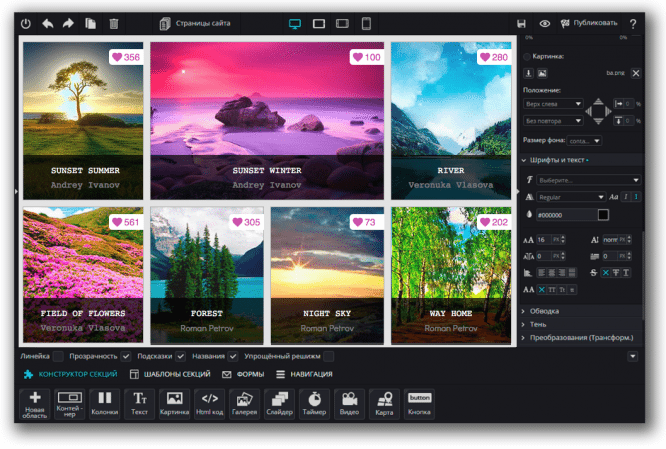9 lectures on contemporary art
9 lectures on contemporary art
Lectures on contemporary art, book graphics, design and samizdat from the Winter Book Festival held in Kazan in December 2015.
The Winter Book Festival was held in Kazan on December 12-13, 2015.
Famous Russian art critics, designers, artists and book publishers delivered lectures.
Liza Plavinskaya. Lecture “The severity and tenderness of Soviet book graphics”
How was the style and intention of the illustrations of the great Soviet book artists born? What do icons, comics, English tea and abstract art have to do with book illustration?
Dmitry Mordvintsev. Lecture “Book architecture and book design”
The modern design of the book is associated with a complex of technological, marketing, economic and stylistic questions that can be asked both when designing an architectural object and when designing a book. As part of his speech, the head of the ABCdesign studio will consider in different aspects aspects common to books and architecture: space and volume, rhythm and stylistic manifestations, the meaning of classics, utilitarian consumer goods in architecture and book design, communication in time, as well as the meaning of materials and technologies …
Presentation of the book “Art since 1900”. Mikhail Kotomin, Ekaterina Inozemtseva
Innovative in content and form, the book “Art since 1900: modernism, antimodernism, postmodernism” has already been recognized as a milestone in the history of art. One hundred twenty-two chapters, organized chronologically, review key events in art year after year – be it the creation of an outstanding work, the publication of an important text, or the opening of a significant exhibition – forming not one, but many art stories from 1900 to the present day. All the turning points and breakthroughs of modernism and postmodernism, as well as anti-modernist reactions that went against them, were subjected to in-depth analysis.
Anna Kotomina. Lecture “History of Amateur Media in the USSR / Russia”
The lecture provides an overview of the history of the emergence of various forms of “amateur media” – from illegal literature, amateur radio, factory wall newspapers and samizdat to video blogs and Pirate TV. Various forms of media “amateurism” have created precedents to help redefine the official “stories” of different types of media created from within industries. The fluidity of the border between amateurism and professionalism, the flexibility of prohibitions and the rigidity of unspoken rules gave the activity in the field of media amateurism an unprecedented drama. Political ambition, activism of all kinds, career considerations, the need for self-expression and artistic radicalism have energized the amateur media at all times. A retrospective look at amateur media allows us to raise the question of the specifics of interaction between society and the state in the “public sphere” in our country.
Elena Petrovskaya. Lecture “What remains of art”
The presentation examines the development trend of contemporary art associated with actionism, or the art of action. A distinction is introduced between action as a sign of life itself, intrusion as a way of dynamizing social relations and action as a criterion of modern social art. The idea of the connection between the art of action and the crisis of representation is being developed – contemporary art is more and more indifferent to its spectacular and / or expositional component. In this sense, it becomes a conductor of social shifts themselves, which do not and cannot have an author.
Edward Kubensky. Lecture “City between the lines”
Round dates always serve as a reference point – for a step forward or backward. So it is with the century of the Russian avant-garde: summing up, pronouncing, making a kind of results can be considered a completely natural and predictable outcome. Being an absolutely paradoxical and non-systemic phenomenon, the avant-garde did not produce ready-made formulas and did not impose specific guidelines. Its essence was different: in gestures of constant provocation and pushing to seek new experience. Constructivism, being an avant-garde method in the art of the first third of the 20th century, was able to establish itself as an amazing long-liver, whose principles, embodied in the appearance of hundreds of architectural objects, still determine the general character of perception of many cities of post-Soviet Russia.
Ilshat Gimadeev. Lecture “Tatar Shamail. Traditions and Modernity “
Tatar Shamail is an original genre of fine art for Muslims of Russia. It contains both a visual image and a sacred text, being at the same time a work of art, a religious teaching and a literary monument. Shamail is actually an encyclopedia of Tatar culture of the late 19th – early 20th centuries. The Russian educated Muslim of that time was able to understand this complex system of texts and images. Today, its deciphering requires the efforts of a number of specialists – orientalists, Islamic scholars, art historians.
Round table “How book publishing becomes a hobby or a lifelong endeavor. Small press in Russia “
The participants of the round table – the creators of small press publishing houses in Russia, talk about their projects, what small publishing houses exist in Russia today, what is their peculiarity and how they build a dialogue with the modern reader.
Artist talk: Irina Korina
The Russian artist, laureate of the Russian annual professional award in the field of contemporary art “Companion” and the state award in the field of contemporary art “Innovation” talks about her work, artistic practices and sources of inspiration.
…


